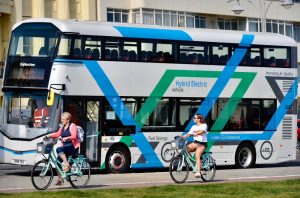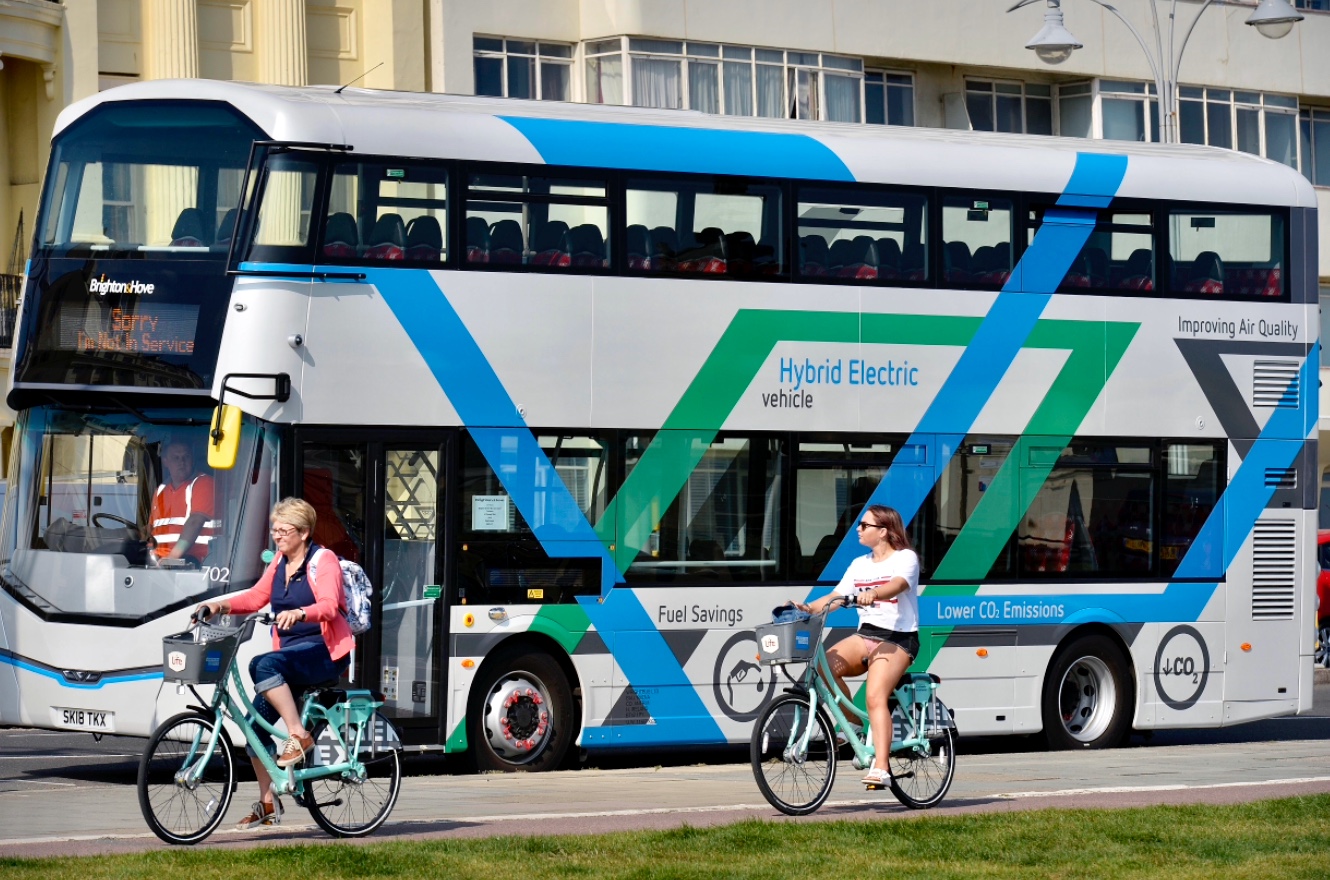Brighton and Hove Buses is testing a new emissions-free double decker as the company looks to operate an even cleaner and greener fleet.

The company said that the hybrid electric vehicle (HEV), which can drive in full electric mode, would help in the race towards an emissions-free future.
The bus company said: “If tests go well, Brighton and Hove Buses believes it would be one of the few bus companies outside London to use the new HEV buses.
“The Euro 6 micro hybrid bus, made by Northern Irish company Wrightbus and costing about £380,000, will be taken through its paces over the next month on route 5, which covers Hangleton, Hove, the city centre, Hollingbury, the universities and Patcham. Thirty buses currently cover this route.”
Brighton and Hove Buses managing director Martin Harris said that the HEV represented another seismic leap towards slashing air and noise pollution and boosting fuel efficiency.
The company will apply to the Office for Low Emission Vehicles for funding, if tests are successful.
Mr Harris said: “A third of our fleet is already nearly emissions-free and nearly 90 per cent of the fleet is LEZ (low emission zone) standard or above.
“The HEV bus is perfect for a specific location where very localised air quality improvement is being targeted. It’s an exciting time to be running buses.”
Brighton and Hove Buses head of engineering Neil Miles said that route 5 was chosen as it was popular and went down North Street, a designated low emission zone.
He said that the HEV’s major benefit was that it is possible to specify where the bus should run in electric mode only – unlike former hybrids – a practice called “geo fencing”.
The bus switches to engine mode after one to two miles (1.5km to 3km) until the battery power regenerates, ready to travel in an LEZ again,
Mr Miles said: “For me it’s an absolute no-brainer. It’s the next logical step on the route towards zero emissions. I think it will make a massive difference. I really do.”
Brighton and Hove Buses will test the bus to ensure that it can travel in electric mode for the entire length of North Street, something Mr Miles is confident will be easily achieved.
Engineers will also test the bus for fuel efficiency. Mr Miles said that the HEV was likely to be twice as fuel efficient as a bendy bus and 20 per cent more efficient than the existing Micro Hybrid 3 buses.
Among the technical features of the new buses are the following.
• The HEV is different to earlier micro hybrids because it has negative braking, which generates kinetic energy to store in the batteries, ready for the next time it’s needed.
• Like other micro hybrids, it has electric steering and an electric compressor, which powers bus brakes, suspension and doors. This takes a load off the engine and means the engine can be smaller, meaning even lower emissions and increased fuel efficiency.
• Like other newer micro hybrid buses, it uses stop-start technology and intelligent alternators, which supply electricity when the bus needs it.









